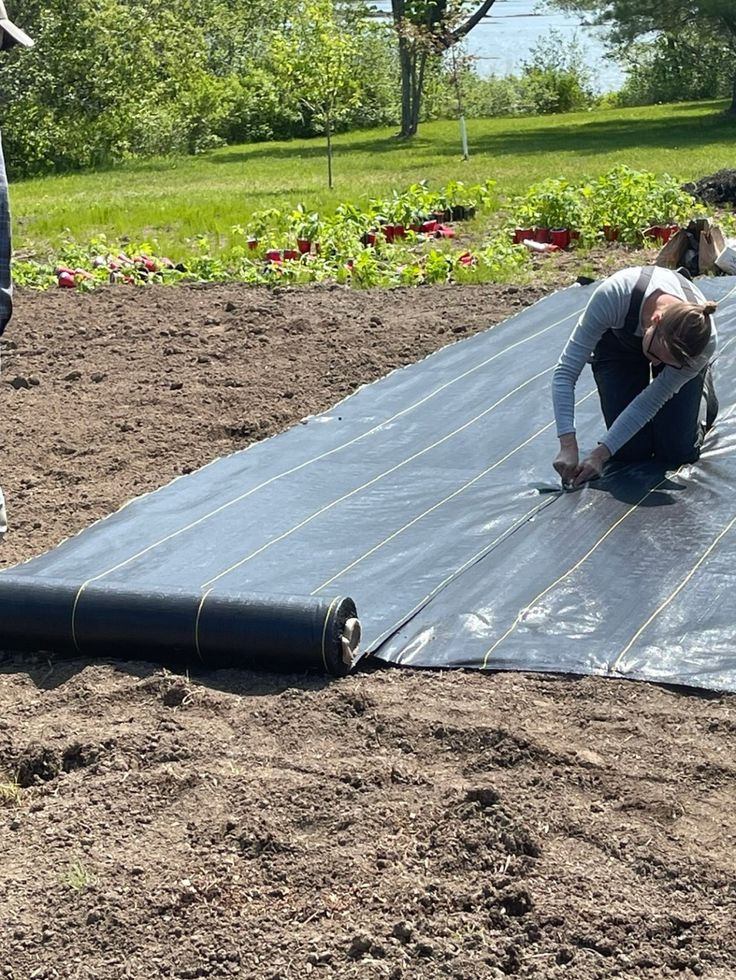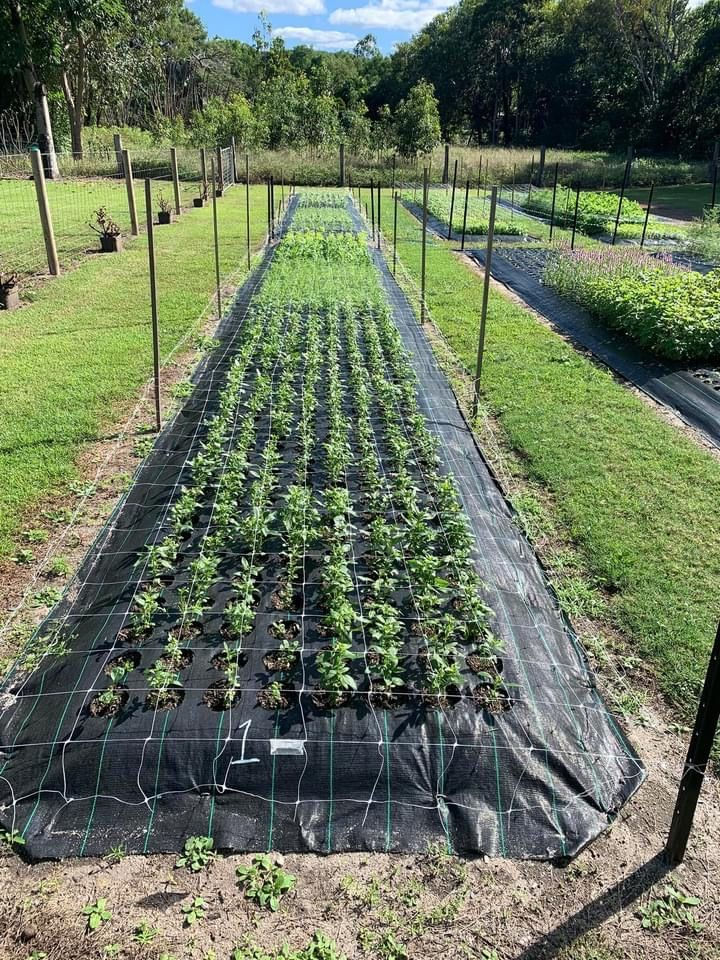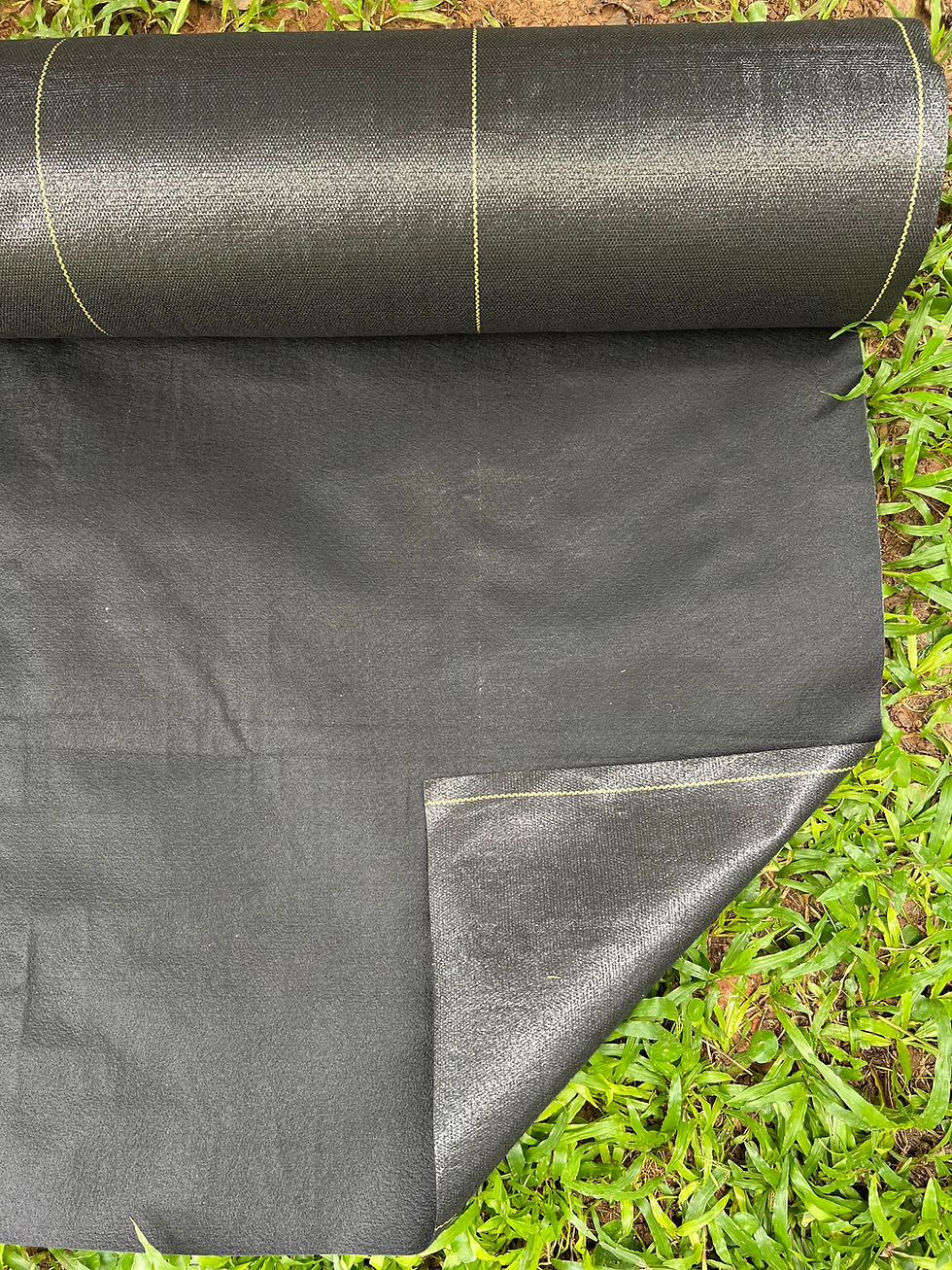Complete Guide: Install Weed Barrier Fabric for a Clean, Weed-Free Garden and Landscape
- dotday_gardener
- Sep 10
- 4 min read
Updated: Sep 15
Weed barrier fabric, also known as landscape fabric, can be a game changer in your gardening and landscaping efforts. It helps suppress unwanted weeds, conserve moisture, and promote healthy plant growth. In this guide, we will show you how to Install Weed Barrier Fabric the right way - ensuring your gardens and landscapes remain flourishing, well-maintained, and low-maintenance for seasons to come.

Why Weed Barriers Matter
Weed barrier fabric is crucial for anyone looking to maintain a healthy and vibrant garden or landscape. By acting as a physical barrier between the soil and light, it prevents weed seeds from germinating and growing. This, in turn, eliminates the need for excessive weeding, which can be time-consuming and labor-intensive.
Using weed barrier fabric not only helps in controlling weeds but also aids in moisture retention. This is particularly beneficial during dry spells, as the fabric allows water to pass through while keeping your soil hydrated. Ultimately, the right installation of weed barrier fabric can lead to lush, weed-free flower beds and thriving vegetable patches.
Tools You’ll Need
Before diving into your garden installation, gather the necessary tools and materials. Here’s a comprehensive list:
Weed Barrier Fabric: Choose a high-quality weed barrier or garden fabric that suits your garden needs.
Utility Scissors: For cutting the fabric to the desired size.
Measuring Tape: To determine the amount of fabric needed.
Landscape Staples or Pins: To secure the fabric in place.
Rake: For preparing the soil surface before installation.
Having these tools at your disposal will make the process smoother and more efficient.
How to Install Weed Barrier Fabric for a Weed-Free Garden Step-by-Step Installation:
Installing weed barrier fabric might seem daunting at first, but with a step-by-step landscape fabric install guide, you'll find it’s quite straightforward. Follow these simple steps:
Prepare the Area: Begin by clearing the area of any weeds, rocks, or debris. Make sure the soil is level and ready for the fabric.
Measure and Cut: Use a measuring tape to determine your required fabric size. Cut the weed barrier fabric with a utility scissor, allowing extra material around the edges for securing.
Lay the Fabric: The correct way to lay weed fabric, ensure it covers the full surface with overlap seams where necessary to prevent weeds from seeping through.
Secure the Fabric: Use landscape staples or pins to anchor the fabric in place. Insert the staples at corners and along the edges to avoid shifting over time.
Finalize Maintenance: Once everything is in place, keep an eye on the edges and corners of your installation throughout the growing season. Make adjustments as necessary.
Following these steps will set you up for a successful installation, ensuring you'll reap the benefits for years to come.

Mistakes to Avoid
While installing weed barrier fabric, there are some common mistakes that you should avoid to ensure the effectiveness of your installation:
Not Cleaning the Area: Skipping the cleanup can lead to existing weeds overpowering your efforts. Always ensure the area is completely clear before laying down the fabric.
Cutting Too Small: If your measurements are too tight, the fabric might not cover the space adequately. Allow for some extra material to ensure complete coverage.
Ignoring the Soil Condition: Laying fabric over compacted soil can result in drainage problems. Always check soil quality before installation.
Neglecting to Secure the Edges: Failing to anchor the edges can lead to the fabric shifting and weed growth along the borders. Always ensure adequate securing.
By being aware of these pitfalls, you can take the necessary precautions to avoid them.
Best Practices for Long-Term Use
To maximize the lifespan of your weed barrier fabric and maintain its effectiveness, consider these best Best Tips for Weed Barrier Installation and Long-Term Use:
Regular Inspections: Periodically check the fabric for any tears or displacement. This will allow you to make necessary repairs promptly.
Monitor for Weeds: Even with a barrier, occasional weeds may pop up, especially along the edges. Regularly inspect and remove them to keep your garden flourishing.
Soil Aeration: Occasionally aerate the soil beneath the fabric to promote healthy root growth and prevent compaction.
By following these best practices, you’ll enjoy a thriving garden or landscape that requires minimal maintenance.
Conclusion
Installing weed barrier fabric is a practical solution for home gardeners, first-time landscapers, and backyard DIYers looking to create beautiful and manageable outdoor spaces. By understanding the importance of weed barrier fabric, gathering the right tools, and following the recommended step-by-step landscape fabric install guide, you’ll be well on your way to a weed-free environment.
Whether you aim to prevent weeds in flower beds this guide provides the essential insights needed for a successful installation. Remember, the key to effective garden and landscape projects lies not only in proper installation but also in ongoing maintenance and attention to detail. When you Install Weed Barrier Fabric correctly, your garden rewards you with lasting beauty and less hassle.
Happy Gardening!



Comments